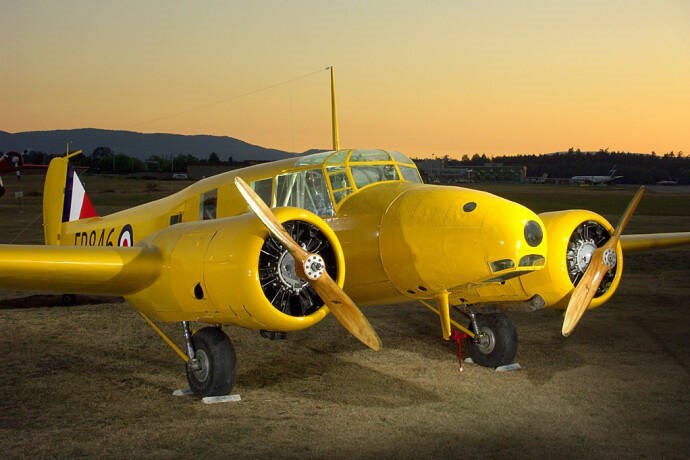THE EARLY BIRDS
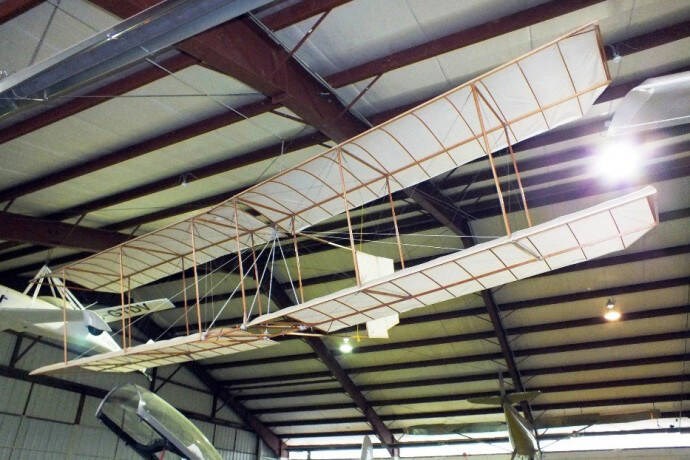
Chanute-Type Glider 1896
This replica of a “hang-glider” built in 1896 by Octave Chanute represents the state of the art in aeronautics in the late 19th century. Chanute’s work was important to the Wright Brothers as it was airworthy and lacked only a practical motor.
The museum’s replica was built in Victoria by Russ Carrington and was donated in 1989.
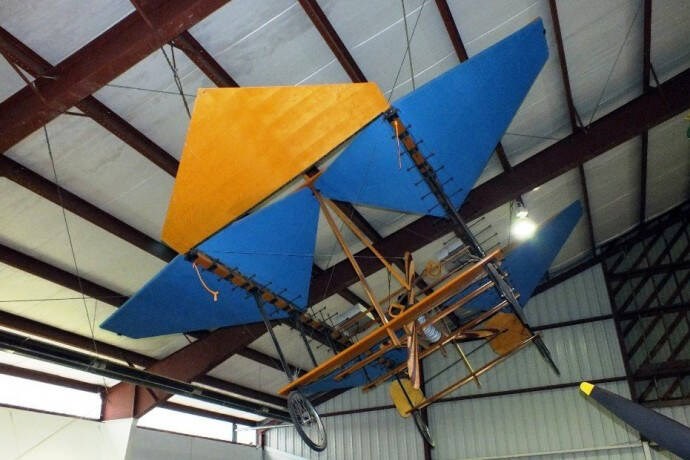
Gibson Twin Plane
Canada’s first designed and built airplane, the Twin Plane was “hopped” at Dean’s Farm in Victoria on Sept. 12, 1910. Ten days later, a short flight ended with a collision with a large tree.
Fortunately, W.W. Gibson was not seriously hurt, and went on to build a much more realistic machine that flew several times in 1911 in Calgary. A further crash ended Gibson’s pioneering efforts.
The museum’s replica was built in 1996.
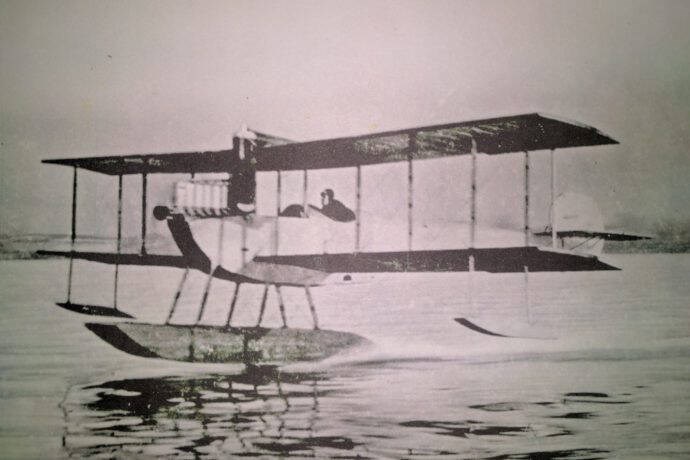
Hoffar H-1
Two Vancouver area boat-builders, Henry and Jimmie Hoffar, were so enchanted with the magic of flight, that in 1917 they built and flew a bi-plane of their own design. In so doing, they created the first successful aircraft that was designed, built and flown entirely in British Columbia, created the first aircraft in Canada with a single float, and built the first floatplane in Western Canada.
The museum’s full-scale, externally-correct replica honours these achievements, and the contribution the Hoffar brothers made to the advancement of air transportation in the province.
THE BUSH LEAGUE (1920 - 1939)
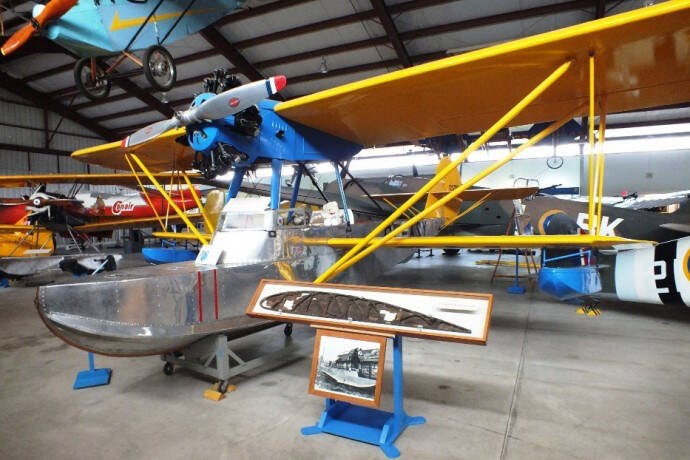
Eastman Sea Rover
The museum’s Sea Rover flying boat is the only one remaining of 18 designed and built by Tom Towle and Jim Eastman in Detroit in the late 1920s. It was assembled from parts of three aircraft. Sections were acquired from Duncan, Fort St. John and Carcross, Yukon.
The fuselage is from Jim Eastman’s personal aircraft that sat derelict at Atlin after Eastman’s death. Fort St. John farmer Roy Fedderly purchased the aircraft and, when contacted through Norm Dressler and Peter L’Hirondelle, donated it to the museum.
Restoration was spread over four years under the supervision of Bert Clark, and it was completed in the summer of 1995.
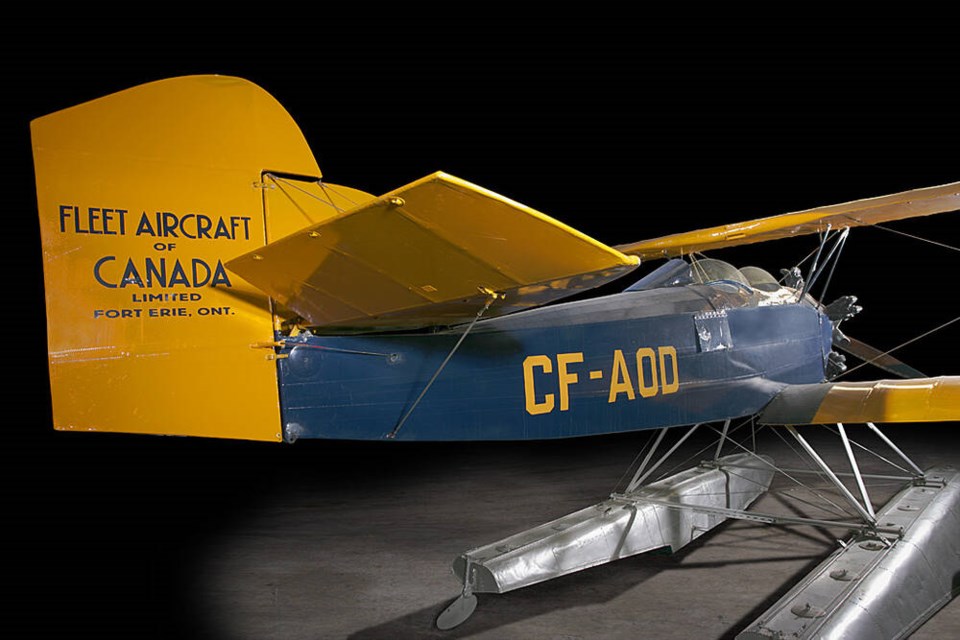
Fleet Model 2
Fleet Aircraft was set up in Canada in 1930 by Reuben Fleet of the Consolidated Aircraft Corporation. The museum’s example spent its nearly 50-year career in northern B.C. engaged in prospecting operating on floats.
It was on display at the Royal British Columbia Museum in the late 1970s and was the oldest registered aircraft in Canada when officially retired in 1981. It is now on long-term loan to the BCAM.
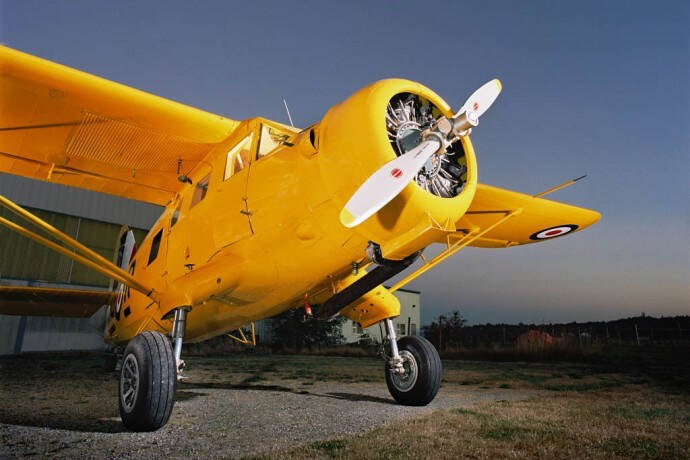
Noorduyn “Norseman”
The Norseman is a true bush plane, the result of research by its builer, Bob Noorduyn, for the optimum specifications of an aircraft for Canadian bush conditions.
The museum’s Norseman started life as a USAAF UC-64A in 1944 and returned to Canada in 1956. It saw a variety of owners, and eventually crashed at a mining site at Bronson Creek. It was badly damaged by the crash and a curious bear.
The museum bought the aircraft for scrap value and acquired another fuselage from Gimli, Man. A lengthy restoration returned the aircraft to airworthy condition.
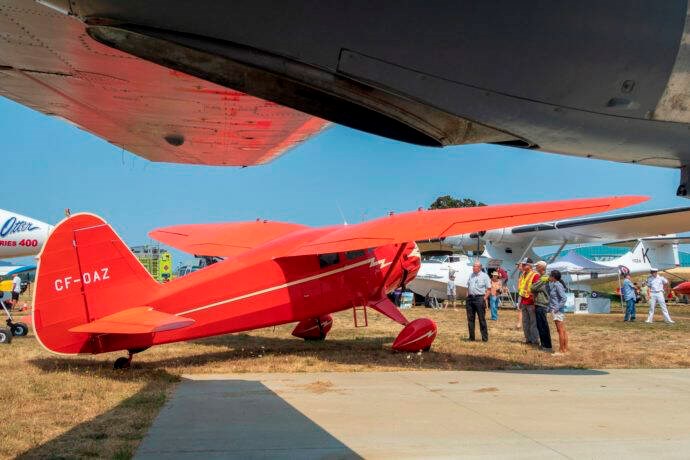
Stinson “Reliant”
The Stinson Reliant was built in 1937 and is one of just 43 constructed. Various Reliants, in appropriate livery and sometimes on floats, were based at RCAF Station Patricia Bay during the Second World War and served as communications aircraft.
The museum’s Reliant was donated to the by Doug Anderson, who had many hours of piloting the Reliant across much of North America.
THE WAR BIRDS
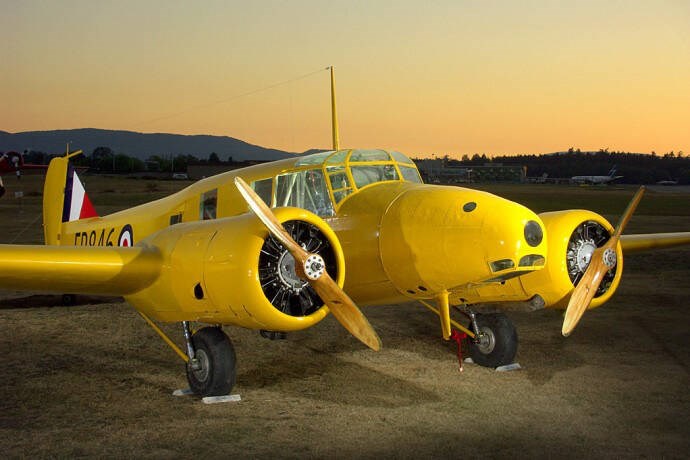
Avro “Anson” Mark II
The RCAF used 4,413 Ansons between 1940 and 1954 — the largest number of a single type in the history of the Air Force. Many were stationed at Patricia Bay during the war as part of the Commonwealth Air Training Plan. Many surplus aircraft saw civilian service after the war.
This airplane was obtained from the Legion in Fort St. John and restored to represent a training aircraft with a paint scheme and markings representative of those that operated from Patricia Bay during the war.
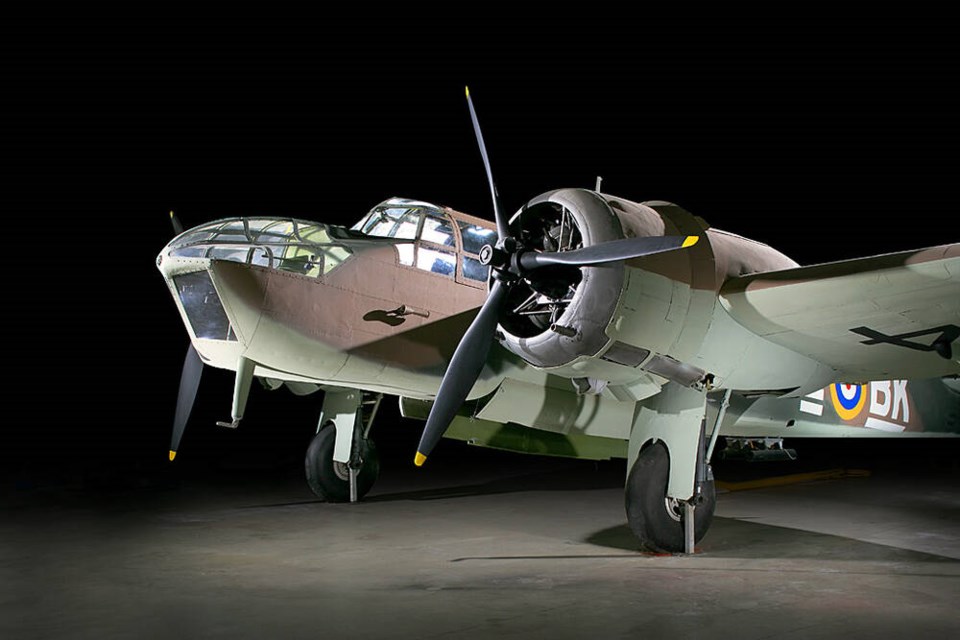
Bristol “Bolingbroke” Mark IV
The name “Bolingbroke” was originally applied to the long-nosed version of the UK’s Bristol “Blenheim” light bomber, but was subsequently used to designate all Canadian licence-built aircraft of this type. The aircraft were used for patrol and training, and a number were based at Patricia Bay.
The museum’s “Bolingbroke” is actually parts of two, one of which was found in pieces on a farm on Salt Spring Island. The fuselage was not salvageable, so one was acquired in Manitoba.
Volunteers restored the hybrid aircraft by 1996, and it was painted in the colours of #3 Operational Training Unit, which had been based at Patricia Bay during the war.
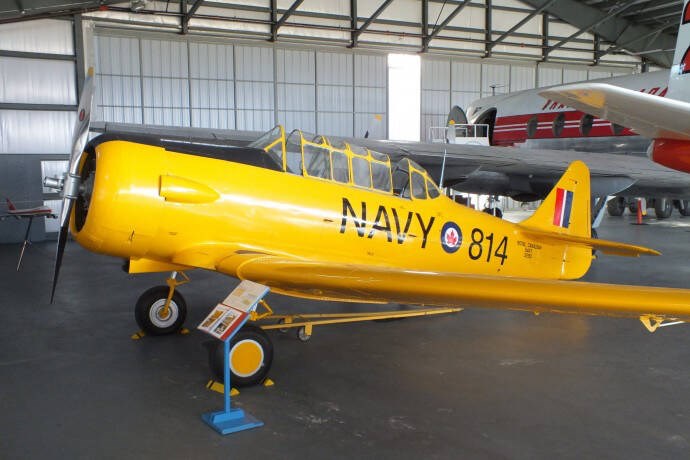
North American Aviation Harvard
The Harvard was an important member of a family of trainers designed by North American Aviation. They were the best advanced trainers of their time, and served for decades.
Harvards were the mainstay of the British Commonwealth Air Training Plan, and were a familiar sight (and sound) in Canadian skies. Noorduyn built 2,800 for the RAF and the RCAF during the war, and Canadian Car & Foundry built a further 550 post-war for Canada and the U.S.
The parent company built 13,685 very similar T-6 and SNJs. The family was widely used throughout the world, and the last retired in the 1990s.
The museum example was totally rebuilt from a write-off which was donated by Victoria Air Maintenance. It includes parts of a Mark II, a Mark 4 and an AT-6 Texan.
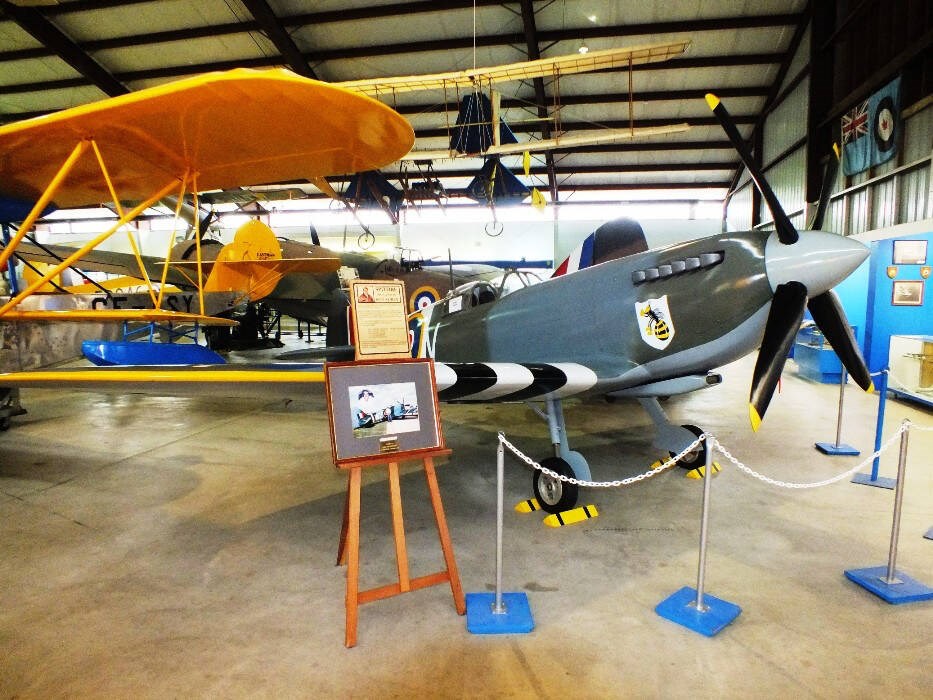
Supermarine Spitfire
The Spitfire is one of the world’s best-known combat aircraft.
The British classic first flew in March 1936, and more than 22,000 were produced, including its naval equivalent, the Seafire.
The museum’s Spitfire is not full-sized. It is a 3/4 scale replica that was under construction by Bob Noren when he passed away at the age of 41. It was presented to the museum in his memory, and was completed by members of the Maintenance Group of 443 Squadron, stationed at Patricia Bay, to commemorate the squadron’s 50th anniversary in May 1993.
THE POST-WAR ERA (1945 - 1959)
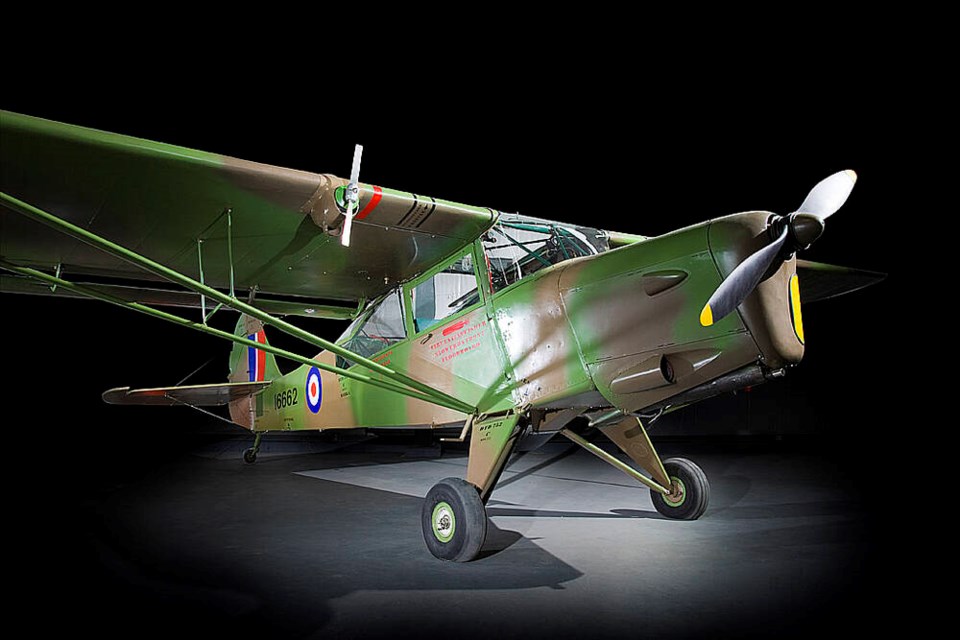
Auster AOP 6
Thirty-six AOP 6s were bought by the RCAF and the Army Air Corps, and they served with distinction in the Korean War. All were retired by 1958.
The museum’s Auster was built in 1947 and served with 444 Squadron and the Joint Training School. After a period in storage, it was sold commercially in 1969, and flew for 12 years before going back into storage.
It was acquired by the museum in May 2000, and subsequently has been completely overhauled under Transport Canada supervision. It has been repainted in the Joint Training School’s colours and markings. Volunteer work was led by Morris Sweet.
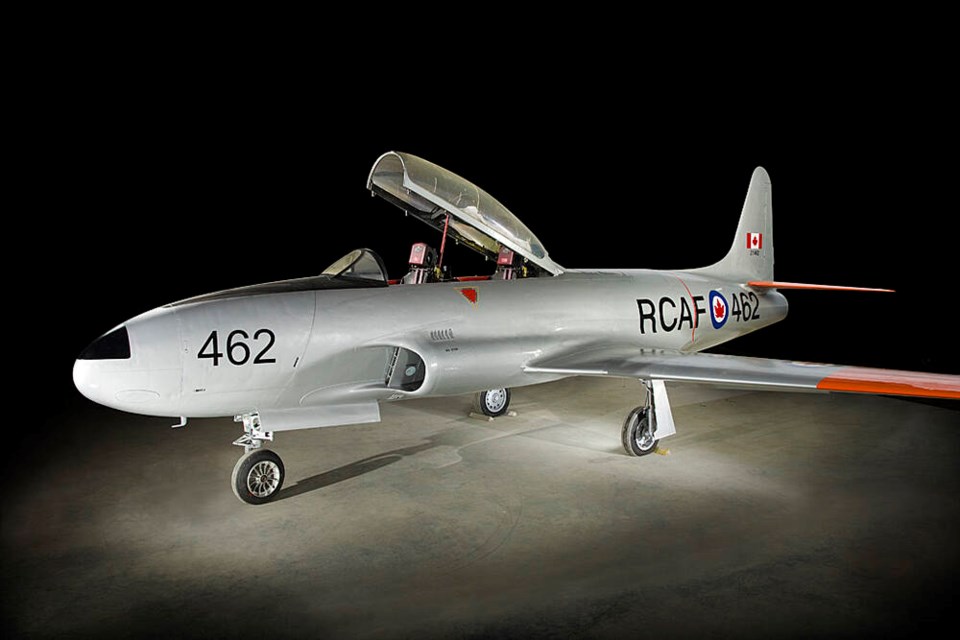
Lockheed T-33 “Silver Star”
The Americans’ first turbojet-powered combat aircraft entered service just before the end of the Second World War and saw considerable action in the early stages of the Korean War. By then, a two-seat trainer version, the T-33, was entering service. It was built in far greater numbers than the fighter — 6,686 in total. They became very widely used, over many years.
The RCAF used the T-33 mainly for advanced pilot training and weapons training. They served in considerable numbers, from 1953 until the last was retired in 2002. The museum’s plane was purchased from a farmer in Stony Plain, Alta., by Palmer Dahl. It underwent an extensive restoration and was rolled out in 2010.
Luscombe “Silvaire”
Luscombe Aircraft Engineering built metal light aircraft from 1933. The “Silvaire” Model 8 was introduced in 1938, but production was interrupted by the Second World War. It was one of the first light aircraft to be built entirely out of aluminum.
The museum’s Luscombe was salvaged in pieces in South America, and was donated in 1988. Restoration work of the structure was carried out by students at Camosun College, under the direction of Bill Lawrie, and it was reassembled by museum volunteers.
The aircraft has been completed in the livery of Bill Sylvester’s B.C Airlines Ltd., one of the province’s first airlines.
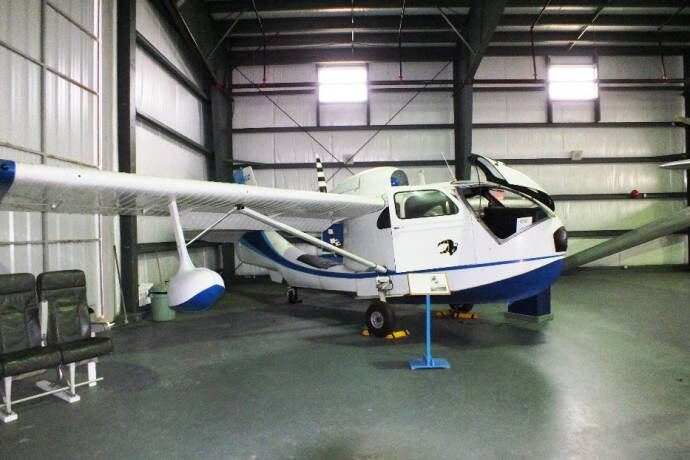
Republic RC-3 “Seabee”
The first amphibious light aircraft intended for private ownership took to the air in November 1944. The museum’s example is an RC-3 model that as built in 1947. It was originally the personal aircraft of the manager of Alaska Coast Airlines, but was subsequently purchased by Norie Brothers Logging.
Henry and Frank Norie donated it to the Museum in 1991.
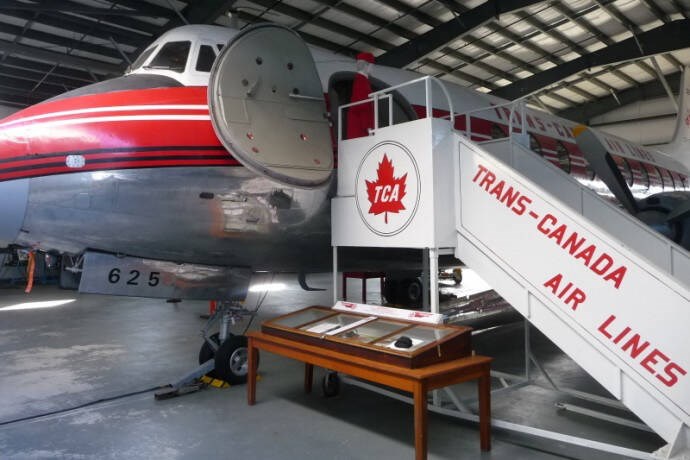
Vickers “Viscount” 757
Vickers Viscount proved to be the most successful British commercial airliner of all time. It was the world’s first turboprop powered airliner, and the prototype flew in July 1948. Trans Canada Airlines started operations with the first of 51 that it purchased in early 1955.
The museum’s Viscount was delivered in 1957 and served until 1974. It was owned briefly by Harrison Airways and later was used by the British Columbia Institute of Technology as an instructional airframe at Vancouver International Airport. The museum acquired the aircraft and it was carried by barge from Vancouver International to the seaplane ramp at Patricia Bay.
Restoration was by a skilled team under former Viscount pilots Al Catterall, Bob Hallworth and Dave Peters.
THE BOOMING ’60s (1960 - 1969)
Canadair CF-104 Starfighter
The Canadair (Lockheed) CF-104 Starfighter, a Cold War fighter-bomber, was a major Canadian contribution to NATO. The aircraft became the first production aircraft to achieve Mach 2 (twice the speed of sound), and to reach an altitude of 100,000 feet (30,480 metres) following a takeoff under its own power.
The museum example, a single-seat CF-104 model, was produced in 1962 and based at RCAF Station Cold Lake, Alta. In April 1991, the Starfighter was transferred to the Comox Military Museum, where it remained on display until being donated to the B.C. Aviation Museum.
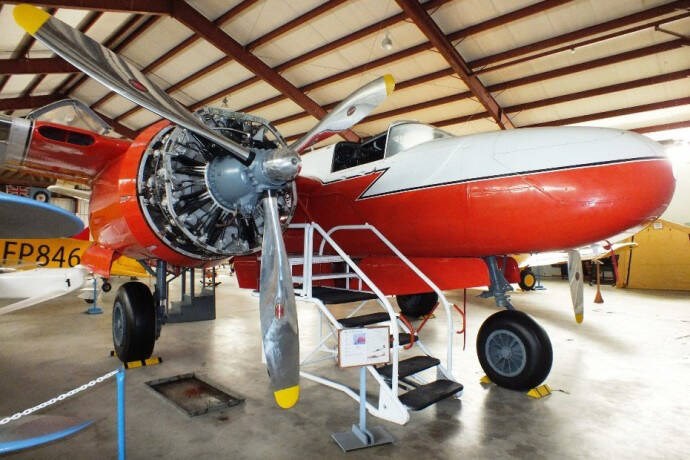
Douglas A26 “Invader”
It proved to be so valuable that it served with distinction in the Korean War, and by 1963 was being remanufactured for further service in the Vietnam War. In the 1960s it acquired a new profession as a fire bomber.
The museum’s plane entered service with Conair of Abbotsford in 1970. It completed over 2,000 hours of duty in its new role, until its last operational flight in 1984.
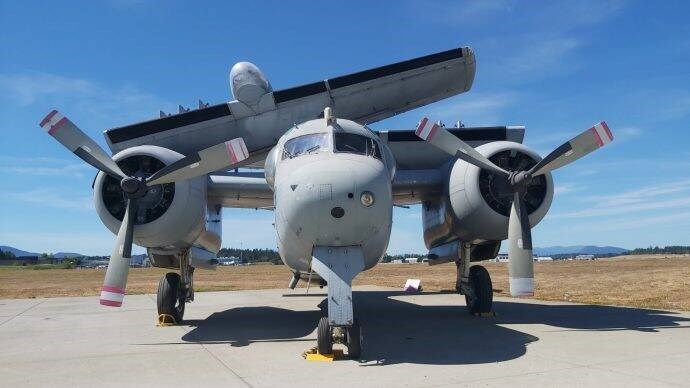
Grumman Tracker
The Royal Canadian Navy selected the Grumman Tracker for anti-submarine detection. One hundred were built under licence from de Havilland Canada and fitted with Wright Cyclone engines built by Canadian Pratt and Whitney.
The museum’s Tracker was donated by the Military Education Centre in Chilliwack in 2021. It is similar to those used by the Royal Canadian Navy/Canadian Armed Forces based at Patricia Bay/Victoria International Airport with VU-33 Utility Squadron 1962 to 1974.
Westwind IV
The Westwind IV is a much-modified Beechcraft 18; a small transport and trainer first flown in January 1937. The Beechcraft 18 was built in large numbers and remained in production until 1967. The RCAF had 394 in service as the Expeditor between 1941 and 1968. It was used as a trainer in the 1950s before becoming a B.C. government transport assigned to well-known highways minister Phil Gaglardi. It was sold to Keewatin Air of Manitoba as a light transport, and was damaged by fire. The damaged airframe was donated to BCAM in 1990, without engines.
THE CHOPPERS
Aerospatiale Alouette III
The museum’s Alouette was manufactured by Aerospatiale in Marignane, France, in July 1966. During 1967 it was delivered to the Canadian Coast Guard in Victoria, where it served for 20 years.
In 1987 the aircraft was donated to the B.C. Institute of Technology for student training. It was subsequently donated to the Steveston-London Secondary School. In May 2016 the Alouette was donated to the B.C. Aviation Museum, returning to the community in which served so many years.
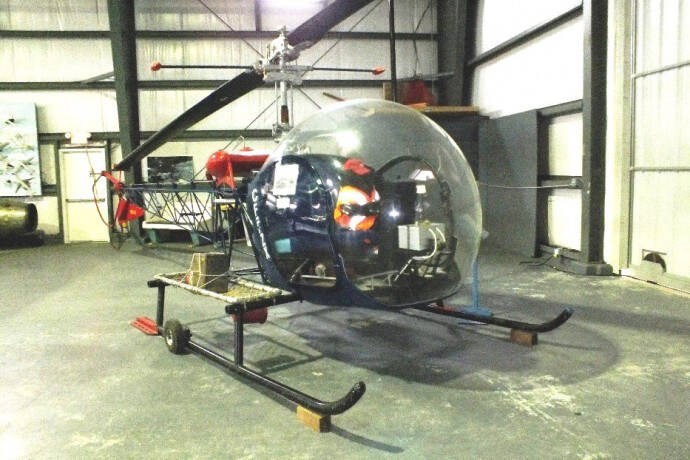
Bell Model 47D
Larry Bell was one of the first to develop a helicopter that didn’t shake itself to pieces. The Model 47 was so good that more than 6,200 were built during the next 30 years, and modern light helicopters are remarkably similar in layout.
The Model 47 first flew in December 1945, and received the first licence for a general purpose helicopter four months later. The museum example was the first commercial helicopter to be operated in B.C.in 1948. This helicopter is owned by the Royal British Columbia Museum and is on long-term loan to the BCAM.
